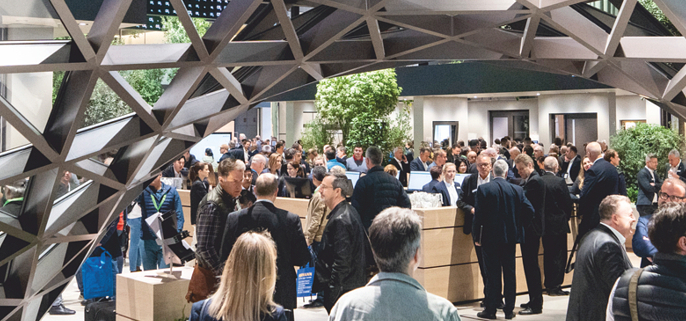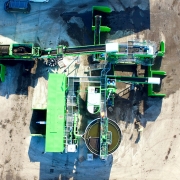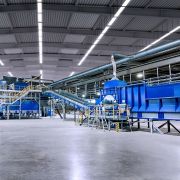Circular Economy in the Construction Sector
In April this year, following a four-year break, BAU, one of the world’s leading trade fairs for architecture, materials and systems, was back.
About 190,000 visitors informed themselves at the Messe München exhibition center about the innovations and trends of the 2,260 exhibitors (2019: 2,250) from 49 countries (2019: 45 countries). Halfway through the trade fair, visitor numbers almost reached the 2019 level. However, token strikes at German airports and in the regional and long-distance public transport system curbed the positive trend. According to the organizers, BAU, nevertheless, delivered a very successful result despite these general conditions.
One area of focus at the exhibition was the latest developments for sustainable and recyclable building materials. The topics of circular economy and urban mining were also on the agenda in the presentation program. The goal of the circular economy is to plan and build in a way that results in as little waste as possible, whereby materials are reused rather than disposed of, Messe München underlined.
At BAU 2023, exhibitors offered reusable products under the label “ReUsed” and the return of used products. These will then be prepared, declared as used and re-sold. Trading organizations, where regional and local builders’ merchants come together to procure products in large quantities and on favorable terms, are also saving resources. Here, purchasing is based on actual demand and specifically considers local manufacturers.
Proof, certifications, databases
There is also increasing demand for proof of the sustainability of products and building materials as part of the bidding process. However, manufacturers often find this difficult in the thicket of standards and regulations, the exhibition corporation stated. “The basis is provided by Environmental Product Declarations (EPDs), which are issued by the Institut Bauen und Umwelt (IBU), for example. They contain information about the environmental impact of building materials, construction products and building components. Product or material databases that list recyclable products are relatively new. There, manufacturers can upload their products and, if necessary, have them evaluated immediately. The product information, in turn, flows into the sustainability assessments of entire buildings, which various organizations (DGNB, BNB, BREEAM and LEED) carry out and award certifications for.”
Urban mining: Great potential for secondary raw materials
The term “urban mining” refers to removing materials that have already been built in urban areas to be reused. There is great potential for secondary raw materials. “According to the German Environment Agency, an old building with ten residential units will deliver an average of 1,500 tons of material for reuse,” the organizers of the trade fair underlined. “Figures published in 2010 indicate that the material in existing buildings and infrastructure adds up to 28 billion tons. In future, there will be material passports to document what is installed and where.”
Recycling primarily for road construction and earthworks
“It is true that more than 90 percent of the building materials that result from the processing of mineral construction and demolition waste are recycled; however, only 20 percent of that goes to asphalt and concrete production,” Messe München reported. The majority would end up as recyclate in road construction and earthworks, “not in building construction, which requires high-quality raw materials”. An additional problem would be that the recycling potential of traditional building materials such as concrete, metal, glass, brick, plastic or plaster has not yet been adequately researched for many application areas. “One of the many issues is correctly separating materials and construction products that are often glued or screwed together. This is an indispensable prerequisite for returning materials to technical or biological cycles and must therefore be taken into account during the planning phase.”
Up until now, wood is the only material to have established itself as a renewable raw material. One in four detached and duplex houses in Germany is constructed from wood. That is not the case with flax, bamboo, clay, hemp or straw: Although these materials are considered to be the building materials of the future, they are not yet ready to play a major role in architecture or replace conventional building materials, the exhibition corporation described the current situation. “When it comes to tensile and compressive strength, concrete and steel will continue to dominate, at least in the near future.”
The next edition of BAU will be held from January 13 to 17, 2025, at the Munich exhibition grounds.
(Published in GLOBAL RECYCLING Magazine 2/2023, Page 31, Photo: Messe München)









